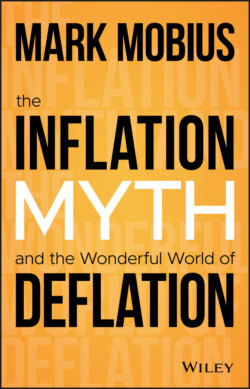Читать книгу The Inflation Myth and the Wonderful World of Deflation - Mark Mobius - Страница 12
Importance of Inflation Numbers
ОглавлениеEver since the earliest price indices were first introduced at the start of the eighteenth century, the measurement of inflation and attempts to control its growth have become increasingly salient. After the Second World War, full employment was seen as one of the major goals of economic policy. Then, over the next forty years, price stability took its place as the primary economic aim of governments and central banks. As mentioned previously, it was Ronald Reagan in the 1980s who described the threat of inflation as being “…as violent as a mugger, as frightening as an armed robber and as deadly as a hitman.”3 Showing the priorities of modern governments, in 1991 the then British Chancellor, Norman Lamont, told the House of Commons that: “… rising unemployment and the recession have been the price that we have had to pay to get inflation down. That price is well worth paying. That focus on keeping inflation down remains at the heart of monetary policy.”4
Central banks around the world are charged with keeping inflation at an agreed rate. For example, in the UK each year, the Chancellor of the Exchequer writes to the Governor of the Bank, confirming what the inflation target is. Should the inflation rate deviate from this target by more than 1%, the Governor must write to the Chancellor, explaining why the inflation target has been missed and what steps the Bank is going to take to rectify the situation.
Price instability is, of course, not just an issue for governments. For investors, information regarding the rate of inflation plays an important part in deciding where they put their money. Rising levels of inflation supposedly reduce the value of savings and investment unless interest rates and returns on investment keep pace. This has an impact on everyone – from those with savings in a bank account, to where pension funds are being invested.
